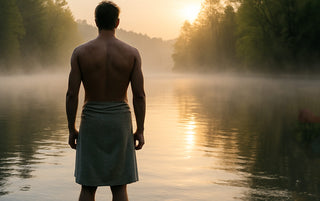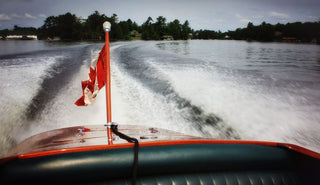We have been seeing so many tracks on the trails this year! Turns out, winter is the perfect time to get out for a hike in Muskoka and hunt for animal tracks in the snow. In warmer seasons, animals’ prints can be difficult to spot on the ground, but the snow better allows us to see which animals have been around. This way we get to experience the busyness of the forest in a new way!
Not only is identification a fun challenge, but tracking allows us a glimpse into what the animals have been up to, as well. We can learn what animals are around, what routes they take, if they are alone, with a mate or a family/pack, whether they are walking or running, sometimes even what they are eating or where they are pooping….all by following their tracks in the snow. It’s a fun opportunity for us to put our detective skills to use!
Here are some tips to help you identify animal tracks in the snow.
For starters, you will want to consult websites, guidebooks or an app like itrack Wildlife to help you recognize paw, hoof and footprints. There are even some helpful Facebook groups dedicated to identifying animal tracks. We found a fantastic, printable field guide at https://www.personalcreations.com/blog/animal-tracks which we have found super useful.

Once you find a track, start by looking at the basic shape of the prints
Is it round or elongate? How many toes do you see? Are there claw marks? What is the size?
Most mammals have five toes on each foot, but dogs and cats have only four (their 5’th toe is actually called a “dewclaw’ which is located higher up from the foot). This means a print of four toes and a heel pad indicates canine or feline. At first glance they may be a bit tricky to tell apart, but canine tracks tend to be more elongate, and even symmetrical compared to feline, which are more roundish. Claws usually can’t be seen in feline tracks either, because they’re retractable.

Size is the easiest way to differentiate between a house cat and a larger feline species like bobcat, lynx or cougars (yes we have wildcats in Muskoka, although they are rare!) In the case of canines, wolf and dog prints tend to be the largest, followed by coyote and then fox prints. Dog prints can sometimes be distinguished from wild canine species from their nail markings. Dogs’ nails tend to be thick and blunt compared to the thin, sharp nail markings of fox, coyote or wolves.
Obviously hoofed animals and birds have very different tracks from other Muskoka wildlife. Moose and deer tracks are very similar in their heart shape, but obviously moose are way bigger! Birds have 4 toes as well, but in large birds like wild turkeys, we usually only see the three large toes…the fourth isn’t usually visible in the track. If you are really lucky, you might find the mark of a hawk or owl that has crashed into the snow to catch a mouse, leaving behind the imprint of its body, outstretched wings and tail feathers!
Next, look for patterns in the snow
Because different animals have different gaits, they move in unique ways. The patterns they leave behind can give us evidence as to who is who. Some tracking experts have found it helpful to group certain animals into categories of “hoppers”, “bounders”, “amblers” or “steppers”.

“Hoppers” are animals like hares, squirrels, rodents and some types of birds, like chickadees and bluejays. These tracks usually show the feet are directly side by side. Fast-hopping rabbits tend to land with their bigger hind feet in front, with the two front feet trailing, one behind the other. The four paws make a sort of “Y” shape. Squirrel and hare prints can be a bit tricky to tell apart, but if you can see toe prints, you are most likely looking at squirrel tracks. Rabbits feet are very furry and the prints are less formed. Also, if your tracks disappear at the base of a tree, well…….rabbits don’t climb trees! ;)
“Bounders” are animals like mink, fishers, otters and other members of the weasel family, and their tracks usually come in pairs. They hop and leap along like a slinky traveling down a set of stairs. The way they move creates an optical illusion that the animal is only hopping along on two feet, but this isn’t the case. Sometimes these animals will leave a slide mark with their bodies or tails, as well. Some such patterns may even alternate between bounding and sliding on flat ground.
“Amblers” are animals like skunks, porcupines and bear. These prints are recognizable by their side-to-side pattern, which shows how the animal waddles through the snow.
“Steppers” tend to put one foot in front of the other, so they leave a narrow, straight track through the snow. These are animals like coyotes, wolves, deer, moose and sometimes birds like crows (although crows like to hop as well). Coyotes, wolves and foxes are efficient and move in straight lines whereas domestic dogs tend to travel erratically or zig-zag.

We hope these tips help you with your identification questions and challenges. We ask you to always keep in mind to be respectful, and if your tracking adventures lead to a den or resting place, please do not disturb the animals!












Murray Bannon
Incredible History Of Pure Muskoka And Great Great Blog On Animal Tracks !!! Fantastic !!!